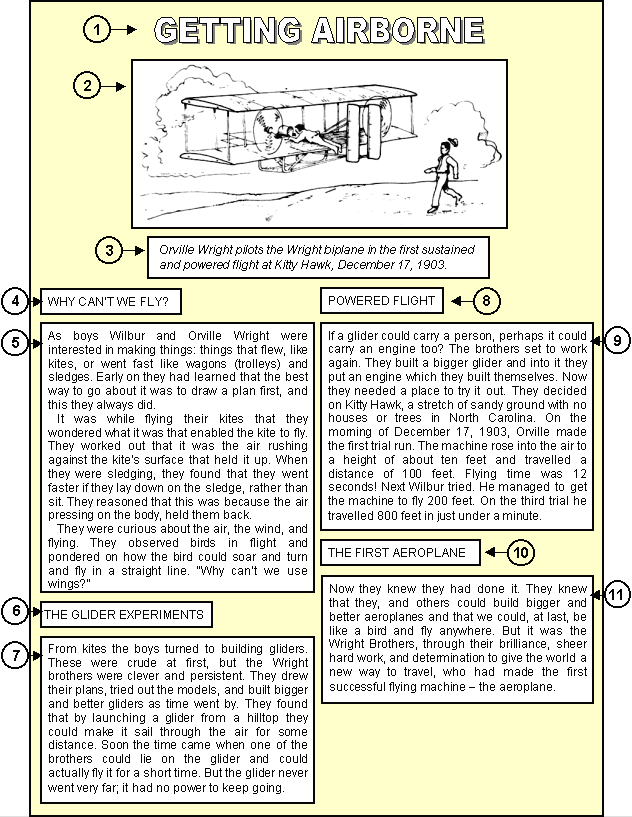Getting airborne
This task is about locating information in an article.
Different parts of the article on 'Getting Airborne' have been numbered. The questions are about the parts of the passage, not about the passage itself.
You do not need to read the whole passage to be able to answer the questions.


